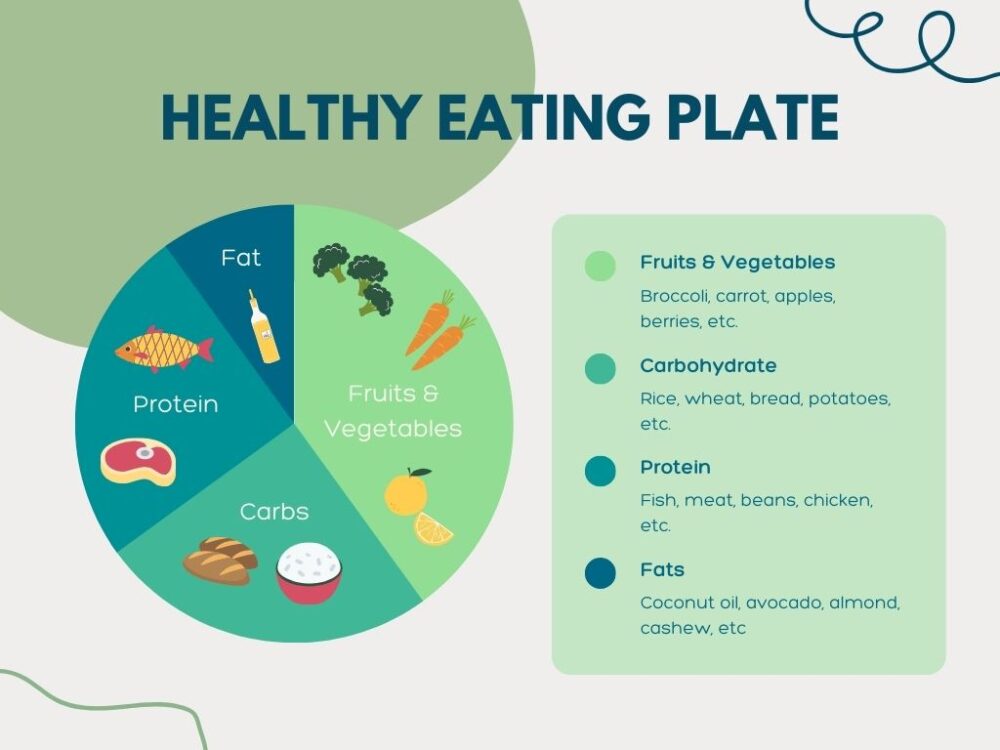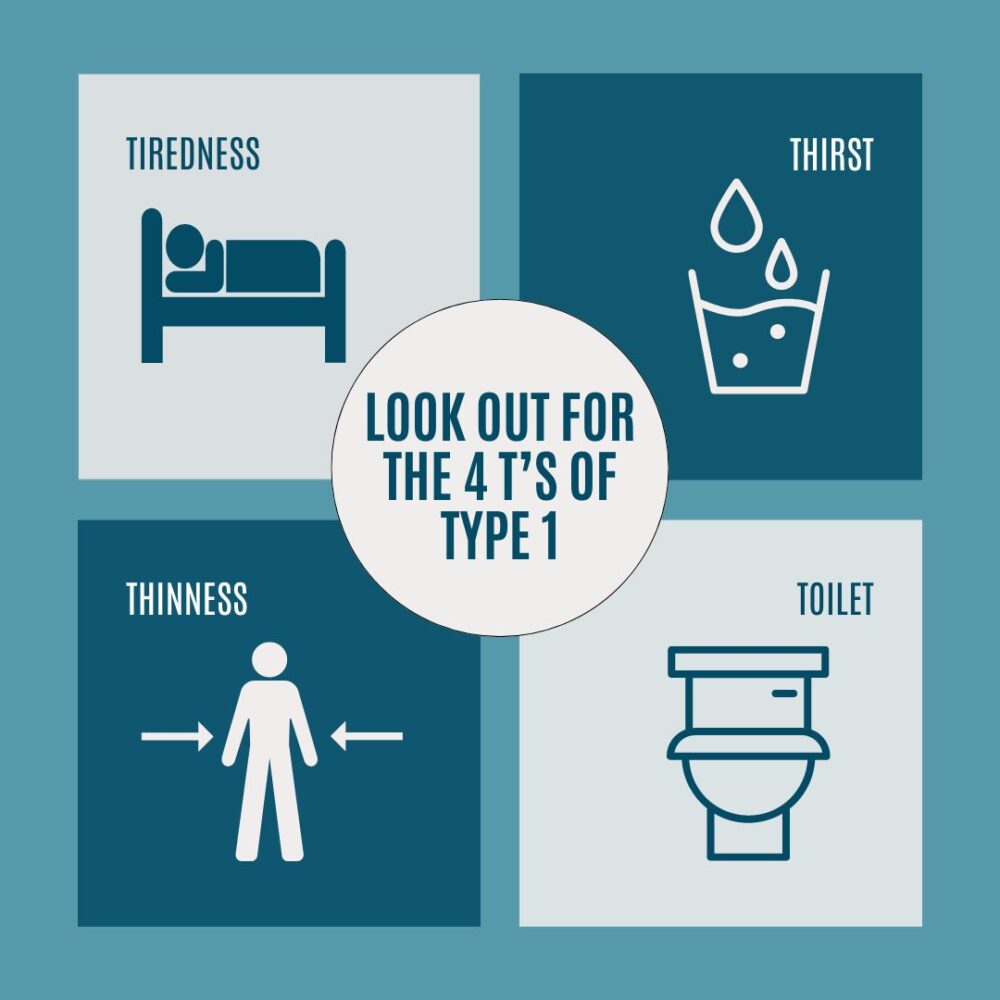Master Carb Counting with Confidence! Discover why it’s crucial, learn practical techniques, and refine your skills to accurately count carbs for better diabetes management.

I still vividly remember the day my daughter received her type 1 diabetes diagnosis. The whirlwind of emotions, the countless questions, and the overwhelming feeling of responsibility – it was a lot to process. But once the initial shock started to shift, one thing became resoundingly clear: taking charge of carb counting was essential.
As a Type 1 mum who has been on this journey for a while now, I’ve learned firsthand that mastering this skill isn’t just about numbers on a food label; it’s about empowering and teaching my daughter to live a healthy, fulfilling life. And trust me, mastering carb counting along with a healthy balanced diet are the most fundamental aspects for effective blood glucose management.
In this guide, we’ll explore why carb counting is important, how to get started, and provide clear techniques and tips to help you or your loved ones accurately count carbs. Whether you’re new to carb counting or looking to refine your skills, I want to empower you too with the knowledge and practical tips to navigate the world of carbohydrate counting with confidence!
Key Terms
You’ll encounter these words often so it’s important to understand the key terms:
- Food labels: These are found on packaged foods and contain nutrition information, including total carbohydrates (carbs) and serving size.
- Carb counting: This method involves tracking the amount of carbohydrate (in grams) consumed and adjusting insulin doses accordingly.
- Carb Ratio: This refers specifically to the insulin-to-carb ratio (ICR). This personalised ratio determines the amount of rapid-acting insulin needed to “cover” the gram amount of carbohydrate consumed.
- Glycemic Index: The Glycemic Index assesses the impact of a particular food on blood sugar levels, assigning it a score ranging from 0 to 100. This score indicates the speed at which the food elevates blood glucose levels.

Understanding the Basics of Carbohydrates
Carbohydrates, often referred to as “carbs,” are the body’s primary source of energy. They come in various forms, but they all ultimately break down into sugars, which your body uses to fuel itself. While all carbs eventually turn into glucose, they differ in how quickly they can affect your blood sugar levels.
Simple carbohydrates, like those found in sugary drinks, sweets and pastries, are absorbed rapidly, causing a quick spike in blood sugar. On the other hand, complex carbohydrates, like whole grains and vegetables, release their energy slowly, leading to a more gradual rise in blood sugar.
Understanding these distinctions is crucial for effective carb counting and insulin delivery as it allows you to make more informed choices about the types and amounts of carbs you or your child consumes.
Learn more about carbohydrates in:

Carbohydrates 101 – Facts about Carbs
Carbohydrates 101: Empower yourself with knowledge and facts about carbs, their impact on blood sugar regulation, and living with type 1 diabetes.
Why is Carb Counting Important for Type 1 Diabetes Management?
Carbohydrates raise blood sugar levels. For individuals with T1D, whose bodies do not produce insulin, keeping blood sugar levels in range is a daily challenge. However, carb counting is a fundamental tool to manage this and to help with better glycemic control. Here’s why:
Precise Insulin Dosing: Knowing the exact amount of carbs in your meals allows for more accurate insulin dosing. This helps prevent blood sugar spikes or crashes, and hopefully achieve more stable glucose levels.
Flexibility: Carb counting grants you the freedom to enjoy a wide variety of foods while still managing your diabetes effectively. This flexibility can greatly improve health, wellness and overall quality of life.
Aid in Hypoglycemia Prevention: By understanding how different foods affect your blood sugar levels, you can manage hypoglycemia (hypo/low blood sugar) episodes more effectively
Personalised Diabetes Management: Carb counting enables you to personalise your diabetes management plan, making it easier to achieve target HbA1c levels and time in range.
Getting Started with Carb Counting
Getting started with carb counting felt like a very daunting task. It involves calculating the amount of carbohydrates (carbs) in food and using that information to determine the appropriate dose of insulin. But once you have grasped the basics, it will become easier. We have learnt some tips and tricks along the way to make this easier, which I will share with you later.
Here’s my breakdown of helpful tips and what you need to know when you’re getting started:
Units of Measurement
In the UK, the standard unit for measuring carbs is grams (g). This means you’ll be focusing on the number of grams of carbohydrates listed on food labels and in resources.
Nutrition Facts Label
Become familiar with food labels! These labels provide valuable information, including the total amount of carbohydrates per serving and the nutritional breakdown of the food.

- Serving Size: Pay close attention to the serving size listed, as it’s easy to underestimate portions and miscalculate carb intake.
- Cooked or Uncooked: Check if the values provided are for raw or cooked weights. This can easily catch you out
- Focus on Total Carbs: When reading food labels, look for the “total carbohydrates” value, usually expressed in grams (g) per serving. This is the number you’ll use for carb-counting purposes. Don’t get confused by the “of which sugars” value, which only represents a specific type of carbohydrate (sugar) and may not reflect the total carb impact on blood sugar.
Be Mindful of Hidden Carbs
Be cautious of hidden carbs in drinks, condiments, sauces, and dressings in particular. Sugars come under many different names and these can add up quickly. You can find a list of these in my article: BAKING WITH SUGAR SUBSTITUTES
Alternatively try switching to some easy homemade options like baked beans, tomato sauce and salad dressings. That way you are in control of everything that’s added to your foods!
Beyond Packaged Foods
While nutrition labels are a great starting point, understanding the carbohydrate content of fresh foods and homemade meals is also important. Below I break down a practical example for you but all recipes on WHK have helpful carb-counting information which can also help you with this.
Utilise reliable resources like food counting apps, books, like Carbs & Cals, and websites like Fitness Pal, to find nutritional information for various foods. We use Nutracheck which has been such helpful carb counting and food diary for us (and I’m not an affiliate just a happy customer!)
Insulin-to-Carb Ratio (ICR)
This personalised ratio determines how much insulin is needed per gram of carbohydrate. Your diabetes healthcare team will help establish this ratio based on various factors like age, weight, and activity level. But bear in mind that this ratio isn’t static and can be variable throughout the day, week, month, or year. As you become more confident and spot trends then you will be able to make adjustments to get these ratios right for you or your child.
You should always consult with a healthcare professional. Before you begin carb counting, hopefully, you will have received some training from your diabetes team, registered dietitian or diabetes educator. They can help you establish a foundation for understanding carb content in different foods, along with support and help you with any questions down the line.
Carb Counting Techniques
1. Weigh and Measure
Invest in a good digital food scale to weigh foods. This ensures accurate carb counting, especially for homemade dishes.

2. Utilise Apps
Several apps, such as Carbs & Cals, Nutracheck, and MyFitnessPal are designed to help you track carb intake. Sadly there is a yearly subscription with the first two but their accuracy and database of UK foods is worth the fee. These apps offer an extensive list of foods, including popular restaurants, their carb content and nutritional profiles.
3. Carb Counting Books
Consider purchasing a carb counting book, like “The Carbs & Cals Count Your Carbs & Calories” book, which contains photos of portion sizes and carb counts for various foods. This can help in those times that you have to visually carb count your food (i.e. in a restaurant).
4. Keep a Food Diary
Maintain a food diary to record your daily carb intake. This practice can help you not only be more mindful about what you or your child are eating but will also help to identify patterns so you can make adjustments to your meal plan or insulin ratios accordingly.
5. Understand the Glycemic Index
Familiarise yourself with the glycemic index (GI) of foods. While not a substitute for carb counting, the GI helps understand how different carbohydrate choices impact blood sugar. This knowledge can aid in your meal planning. I talk more about the glycemic index and its limitations in High vs. Low Glycemic Index of flour on Blood Sugar Management
6. Building a Meal Plan
Get organised and create a balanced meal plan that incorporates plenty of carbohydrates, lean proteins, fibre and healthy fats. A meal planner is a great starting point and you can always tailor them to your or your child’s dietary preferences. Sign up below for my free 7-Day Wholefood Meal Plan plus a bonus Balanced Snack Builder:
7. Adapt a recipe
You can adapt a lot of recipes to serve the carbs on the side or measure the carbs before you mix in the sauce. Like in my Quick Thai Noodle Soup where my foolproof method allows you to accurately carb count per person.
8. Master the Art of Portion Control
Be mindful of portion sizes for starchy foods like bread, pasta, and rice. Consider using carbohydrate exchanges like adding some spiralised courgettes to your spaghetti or adding beans and lentils to your bolognese to make it a filling and larger part of the meal.
Read more helpful tips and pasta alternatives in this article.
9. Follow the Healthy Eating Plate
The Eatwell Plate provides a visual guide to portion sizes and food groups, aiding in estimating carb intake for more efficient carb counting.

Simple Carb Counting in Action
Let’s walk through a practical and simplified example for a peanut butter and jam sandwich:
- Check the bread label: 2 medium slices of white bread (serving size) contain 37 grams of total carbs.
- You don’t need to carb count the Peanut Butter
- For the Jam: weigh the jar of jam and take a note (450g). Spread what you need on the bread and take a note of the new weight of the jam (430g). Subtract the starting weight by the end weight to find the serving size (450 – 430 = 20g )
- 20g of jam contains 13 grams of total carbs
- Now calculate the total carb intake for the sandwich: 37 (bread) + 12 (jam) = 50 grams.
- Using your ICR (e.g. 1 unit of insulin per 10 grams of carbs), calculate the insulin dose: 50 grams / 10 grams/unit = 5 units of insulin.
Please note this is an example and all numbers are made up.
Beyond the Basics
As you gain experience, you may want to consider these additional tips and methods for carb counting:
Fibre and net carbs
Understand how dietary fibre affects your blood sugar levels. Net carbs (total carbs minus grams of fibre) can be a helpful concept and one that we use when the food has a high fibre content and carbs we don’t need to car count. For example, falafels, which are predominantly made from chickpeas but recipes tend to add flour. To calculate the net carbs: total carbs minus grams of fibre
Here’s a worked example of calculating net carbs for 4 falafels:
Total carbohydrates: Look for the value listed for “total carbohydrates” per serving. This might be listed per falafel or per 100g: In this Example Total carbohydrates = 20g per 4 falafels
Dietary fibre: Find the value listed for “dietary fibre” per serving. This might be listed per falafel or per 100g: In this Example Dietary fiber = 10g per 4 falafels
Calculate the net Carbs: Net carbs = Total carbohydrates – Dietary fibre
In this example:
Net carbs = 20g – 10g = 10g
Therefore, one serving (4 falafels) has 10 grams of net carbs.
Important notes: Remember, fibre content can vary between brands and even within different types of falafels. Always check the specific nutrition information for the product you’re consuming.
The Influence of Protein, Fat and Fibre
Once you have become more familiar with carb counting basics, You may also want to take note of the Protein, Fat and Fibre content in foods as they will all act to slow carbohydrate absorption. This information can help you make more informed decisions when it comes to insulin delivery. For example, if a food is high in any one of these macronutrients, you may decide not to give all of the insulin up front, and choose a split dose or extended dose if you are using an insulin pump. Again your health care team can help educate you on different bolus techniques.
More Involved Carb Counting in Action:
Now let’s do another example of a slightly more involved carb counting using a homemade dish where all the ingredients are combined: Crispy Kale & Tomato Gnocchi Bake
For this more accurate weight carb counting method, you need to know the weight of your dish before you begin and will use the formula:

The only ingredient that needs to be carb-counted in this recipe is the Gnocchi.
- 1000g of shop-bought gnocchi contains 340 grams of total carbs
- To find the Total Weight, subtract the dish weight from the total weight: 4500 – 1500 = 3000 grams
- Now serve and weigh a portion of the gnocchi bake: 750g grams
- Calculate the carbs per portion for the gnocchi bake using the formula above 340 (total carbs) / 3000 (total weight) x 750 (portions weight) = 85 grams of carbs.
- Using your ICR (e.g. 1 unit of insulin per 10 grams of carbs), calculate the insulin dose: 85 grams / 10 grams/unit = 8.5 units of insulin.
Please note this is an example and all numbers are made up
Other Considerations
While consistent carb counting is crucial for more predictable blood sugar levels and time in range, life doesn’t always follow a perfect plan. Living with Type 1 means you need to learn to embrace flexibility and be kind to yourself. Be prepared to adjust carb intake and insulin doses based on various factors like illness, activity level, and unexpected situations. Continuous glucose monitoring (CGM) can be a valuable tool in this regard, providing real-time insights into blood sugar trends and allowing you to make informed adjustments to your carb-counting strategies.
If like me you are a Type 1 Carer make sure from the get-go (if age-appropriate) that you Involve your child in the carb-counting process. This is not only a great teaching opportunity, but it will also empower them early on in their journey to take ownership of their health. Encourage healthy choices, but remember that demonising any food group can lead to unhealthy fixations. Instead, focus on moderation and maintaining a balanced diet. As they get older you will also need to consider the boundaries and responsibilities for self-management which you can read more about in Diabetes Care, Teenagers and Parenting.
And most importantly of all, celebrate milestones and successes together. Your positive reinforcement goes a long way in motivating your child and creating a supportive environment for their journey.
Becoming a Master Carb Counter
Carb counting is a powerful tool for managing type 1 diabetes. By understanding why it’s important, how to get started, and employing accurate techniques and tips, you can gain better control over blood sugar levels, leading to improved overall health and well-being. Remember, consulting with healthcare professionals is key to successful carb counting and that you’re not alone! Lean on your diabetes care team. They are your partners in navigating this journey. Don’t be afraid to ask questions and seek clarification. Celebrate your milestones, big and small, and always be kind to yourself. we all make mistakes have days when we can’t find the energy or motivation to focus on diabetes and that’s OK. Tomorrow is another day so lean on your support network when you need it and trust your instincts. You’ve got this!
References:
- Diabetes UK. (2021). Learn about Carb Counting
- NHS. (2021). Counting Carbohydrates
- Diabetes UK (2021). Glycemic Index and Diabetes
- The Accuracy of Carb Counting in Adults 2016 Clinical Diabetes
Disclaimer: This information is intended for educational purposes only and should not be construed as medical advice. Please consult with your healthcare professional for personalised guidance on managing their type 1 diabetes.








Leave a Reply